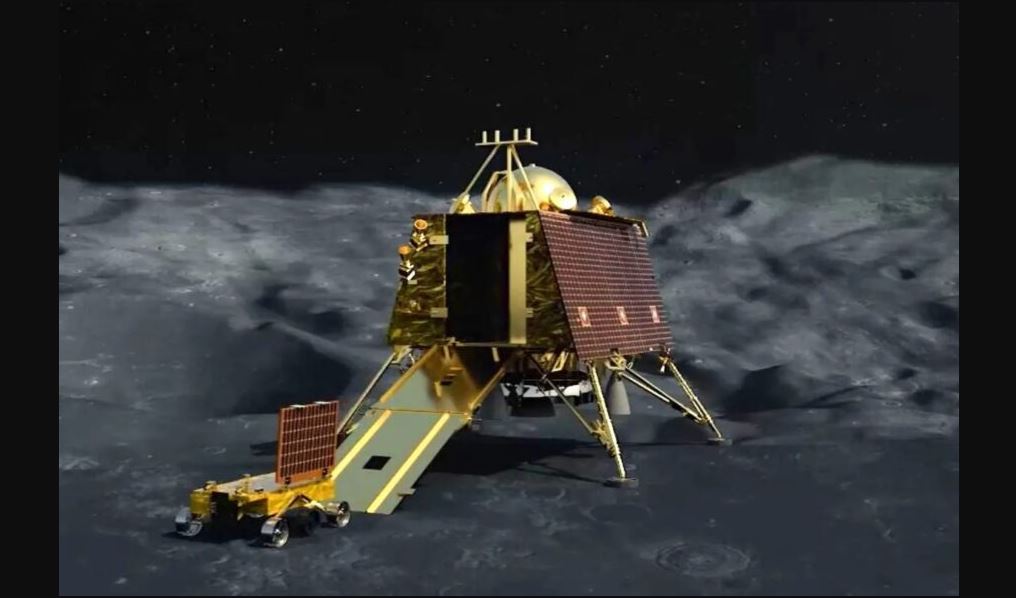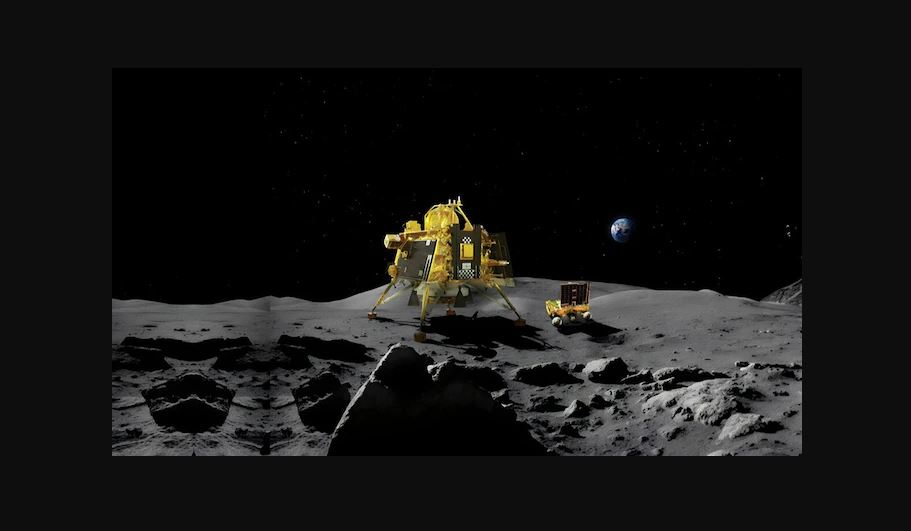India's Chandrayaan-3 Rover Discovers Sulphur And Other Elements On Moon's South Pole
India's Chandrayaan-3 rover achieves a breakthrough, confirming sulphur and diverse elements at the Moon's South Pole, reshaping lunar exploration.
Author:Camilo WoodReviewer:Dexter CookeAug 31, 20231.4K Shares365.7K Views

India's Chandrayaan-3 rover discovers sulphur and other elements on moon's south pole. This marks the first "in situ" detection of sulphur, showcasing its presence directly on the lunar surface rather than via an orbiter.
The rover has also identified elements like aluminium, calcium, iron, chromium, titanium, manganese, silicon, and oxygen, while the search for hydrogen continues. Chandrayaan-3 landed on August 23 and has been operational for a week, generating significant excitement in India and advancing lunar exploration.
The Indian Space Research Organisation (ISRO) made an announcement on X (previously known as Twitter) regarding the successful detection of elements. This feat was accomplished using the rover's 'Laser-Induced Breakdown Spectroscopy' (LIBS) tool. This tool can analyze element concentrations within solid, liquid, or air samples.
“„The Laser-Induced Breakdown Spectroscopy (LIBS) instrument onboard Chandrayaan-3 Rover has made the first-ever in-situ measurements on the elemental composition of the lunar surface near the south pole. These in-situ measurements confirm the presence of sulphur in the region unambiguously, something that was not feasible by the instruments onboard the orbiters.- The Indian Space Research Organisation (ISRO)
According to Sara Russell, a professor specializing in planetary sciences at the Natural History Museum in London, the findings of the rover carry significant implications for both researchers and astronauts.
“„Sulphur is usually bonded to important metals like iron and nickel, and these may be important ores that could be used by future astronauts to enable them to live and work on the moon. We already know that the moon contains sulphur, from our analyses of rocks returned from the moon by space missions, and from lunar meteorites. What we don't really know is the distribution and abundance of sulphur on the moon. This has really important implications for understanding the way the moon evolved. For example how much sulphur was lost when the moon first formed in a giant impact, and today how do the different rock layers of the moon differ in composition?- Sara Russell
Over the past week, ISRO has consistently shared updates on the advancements of the Chandrayaan-3 spacecraft via their Twitter account. Chandrayaan-3 is composed of a stationary lander equipped with elongated legs, affectionately referred to as 'Vikram,' along with a rover featuring wheels, known as 'Pragyan.'
Although the rover was transported to the lunar surface within the lander, it quickly separated just a day after landing on a relatively even spot situated between the Manzinus C and Simpelius N craters. Following its detachment, the rover commenced its exploratory journey.
In the time since its separation, the rover has been transmitting captivating images of the lunar southern region, all while being located more than 200,000 miles away from Earth.
A photograph shared on X by ISRO on Monday portrays a sizable crater, measuring about 13 feet (4 meters) in diameter, positioned directly ahead of the rover, effectively obstructing its path. Had the rover failed to detect this substantial trench, it might have tumbled into it, risking a premature termination of its mission.
Fortunately, the rover's sensors detected the crater, prompting it to retrace its course. ISRO reported that the rover has now embarked on a new trajectory, ensuring its safety.
In another visually captivating image shared on X on Wednesday, the rover captured the Vikram parent lander against the backdrop of a rugged section of lunar soil.
Over the past week, India's Chandrayaan-3 mission has garnered global attention, even though it's already at the halfway point of completion. Both the lander and rover are equipped with scientific instruments that will remain operational for a solitary lunar day, equivalent to 14 Earth days - a relatively brief mission duration.
Once this period elapses, the rover and lander will become dormant on the lunar surface, culminating the mission. These instruments of Chandrayaan-3 will eventually be encased in lunar dust, although the prospect remains that future manned missions to the Moon could potentially salvage their components for reuse.
Last week, India etched its name into the annals of history by accomplishing a successful lunar landing at the moon's southern pole. This achievement comes four years after its predecessor, Chandrayaan-2, fell short of the same objective.
While India becomes the fourth nation, following the United States, Russia, and China, to achieve a safe lunar landing, it distinguishes itself by being the first to do so at the moon's southern pole.
On August 19, Russia's attempt to land a spacecraft at the lunar south resulted in a spectacular failure as the craft spiraled out of control and crashed, inadvertently creating an opportunity for India to secure this remarkable feat.
Conclusion
Chandrayaan-3 embarked on its journey over a month ago, lifting off from the Satish Dhawan Space Centre located north of Chennai on July 14. Notably, India's spacecraft took a longer duration to reach the moon compared to the expedited Apollo missions, which completed the journey in mere days. This extended timeline can be attributed to India's utilization of less powerful rockets for its space endeavors.
Jump to

Camilo Wood
Author
Camilo Wood has over two decades of experience as a writer and journalist, specializing in finance and economics. With a degree in Economics and a background in financial research and analysis, Camilo brings a wealth of knowledge and expertise to his writing.
Throughout his career, Camilo has contributed to numerous publications, covering a wide range of topics such as global economic trends, investment strategies, and market analysis. His articles are recognized for their insightful analysis and clear explanations, making complex financial concepts accessible to readers.
Camilo's experience includes working in roles related to financial reporting, analysis, and commentary, allowing him to provide readers with accurate and trustworthy information. His dedication to journalistic integrity and commitment to delivering high-quality content make him a trusted voice in the fields of finance and journalism.

Dexter Cooke
Reviewer
Dexter Cooke is an economist, marketing strategist, and orthopedic surgeon with over 20 years of experience crafting compelling narratives that resonate worldwide.
He holds a Journalism degree from Columbia University, an Economics background from Yale University, and a medical degree with a postdoctoral fellowship in orthopedic medicine from the Medical University of South Carolina.
Dexter’s insights into media, economics, and marketing shine through his prolific contributions to respected publications and advisory roles for influential organizations.
As an orthopedic surgeon specializing in minimally invasive knee replacement surgery and laparoscopic procedures, Dexter prioritizes patient care above all.
Outside his professional pursuits, Dexter enjoys collecting vintage watches, studying ancient civilizations, learning about astronomy, and participating in charity runs.
Latest Articles
Popular Articles
